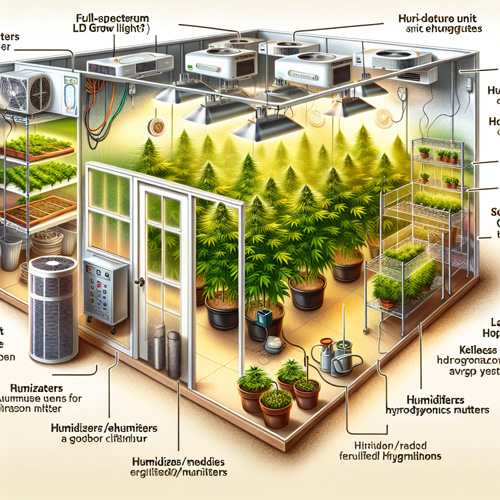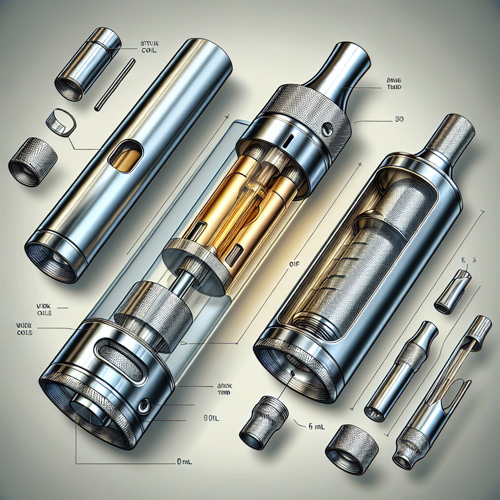
Hemp in Construction Materials
What is Hemp?
Hemp, derived from the cannabis plant, is an incredibly versatile and sustainable material that is gaining traction in various industries, including construction.
Unlike its cousin marijuana, hemp contains only trace amounts of THC, the psychoactive compound, and is primarily valued for its industrial applications. Hemp has been used for centuries for its strong hemp fibers, with the woody core of the plant known as the hemp shiv being particularly useful in construction.
With its numerous benefits and environmentally-friendly properties, hemp is emerging as an ideal material for sustainable building. It offers a range of unique advantages, from its ability to sequester carbon dioxide to its thermal performance and load-bearing capabilities.
As an abundant and renewable resource, hemp is becoming increasingly popular as a raw material for construction materials, such as hemp blocks, panels, and even hemp walls. With its potential to reduce carbon emissions and create energy-efficient and durable structures, hemp is revolutionizing the construction industry.
Benefits of Hemp in Construction Materials
Hemp, derived from industrial hemp plants, is gaining recognition as a sustainable and eco-friendly alternative in the construction industry. With its numerous benefits, hemp has proven to be a versatile material that is revolutionizing the way we build.
One of the key advantages of using hemp in construction materials is its exceptional durability. The woody core, known as hemp hurds or shiv, is lightweight yet remarkably strong, making it an ideal material for load-bearing structures. Additionally, hempcrete, a mixture of hemp hurds, lime-based binders, and water, offers impressive thermal performance, improving energy efficiency and reducing carbon emissions. Hemp also acts as a natural binder, reducing the need for synthetic adhesives and reducing a structure’s carbon footprint.
Another remarkable benefit of hemp in construction is its ability to improve indoor air quality. Hemp-based materials are vapor-permeable, allowing the walls to “breathe” and reducing the risk of mold and mildew. Additionally, hemp naturally absorbs carbon dioxide during its rapid growth cycle, acting as a carbon sink and further reducing greenhouse gas emissions.
In a significant milestone for the use of hemp in building, the International Code Council recently approved hempcrete as a building material. This recognition validates its effectiveness and opens up new opportunities for incorporating hemp in commercial buildings and residential homes.
With its durability, potential as a replacement for Portland cement, and ability to improve indoor air quality, hemp is proving to be an ideal material for sustainable building. As the construction industry increasingly seeks natural materials that are both environmentally friendly and high-performing, hemp’s potential in the field of construction is truly groundbreaking.
History of Hemp in Construction Materials
The use of hemp in construction materials dates back centuries. In fact, traces of hemp-based materials have been found in ancient civilizations such as Mesopotamia and China. Hemp was highly valued for its versatility, strength, and sustainability. It was commonly used in the construction of homes, bridges, and even ships. However, with the rise of industrialization and the demonization of cannabis, hemp fell out of favor in many parts of the world.
In recent years, there has been a resurgence of interest in using hemp in construction materials. This can be attributed to growing awareness about the environmental impact of traditional building materials and the need for more sustainable alternatives. The unique properties of hemp, such as its strength, insulation capabilities, and carbon sequestration abilities, make it an ideal material for creating energy-efficient and eco-friendly structures.
As regulations and attitudes towards cannabis and hemp continue to evolve, the use of hemp in construction is gaining momentum. With the approval of hempcrete as a building material by the International Code Council, hemp has received official recognition and is being embraced by architects, builders, and homeowners alike. The history of hemp in construction materials is rich and storied, and its future looks promising as we continue to explore and utilize its benefits in the pursuit of sustainable building practices.
Use of Hemp in Past Civilizations
Hemp has a rich history of being used as a building material in past civilizations. The durability and superiority of hemp-based materials have been evident throughout the ages. In ancient China and Mesopotamia, hemp was highly valued for its strength and versatility in construction.
One notable example is the 6th-century bridge connector in France known as the Pont de Montigny. This impressive structure was built using hemp-based materials, showcasing the durability and long-lasting nature of hemp. The bridge connector has withstood the test of time, serving as a testament to the superior qualities of hemp in construction.
Hemp-based building materials have been cherished for their ability to provide natural insulation and strength to structures. The use of hemp in past civilizations speaks to its effectiveness as a sustainable and reliable material. Today, with the increase in environmental awareness, there is a renewed interest in using hemp-based building materials to create energy-efficient and eco-friendly structures. The historical use of hemp in construction serves as a powerful reminder of its durability and suitability for creating sustainable buildings.
Recent Developments in the Use of Hemp as Building Material
In recent years, there have been significant developments in the use of hemp as a building material. One noteworthy advancement is the approval of hempcrete by the International Code Council (ICC) in the United States.
Hempcrete is a mixture of the woody core of the hemp plant, known as hemp shiv, and a lime-based binder. This combination creates a lightweight, yet highly durable material that offers various benefits for construction projects.
One of the key advantages of using hemp in construction is its ability to improve indoor air quality. Hempcrete is a breathable material that naturally regulates humidity levels and helps to prevent the growth of mold and mildew. It also acts as a natural insulator, reducing both heat loss and noise pollution.
Hemp walls can be fabricated in different ways depending on the project requirements. The most common method is to pour the hempcrete mixture into formwork, where it is left to cure and harden. Another option is to create precast hemp wall panels, which can be installed quickly and easily on-site.
These recent developments in the use of hemp as a building material highlight its potential as a sustainable and eco-friendly choice for construction projects. With its positive impact on indoor air quality, versatility in fabrication methods, and durability, hemp is rapidly becoming an ideal material for a wide range of applications in the construction industry.
Woody Core and Lime-Based Binder
The use of hemp in construction materials has gained significant attention in recent years due to its sustainability and numerous benefits. One important component of hemp-based construction materials is the woody core of the hemp plant, also known as hemp shiv.
This fibrous material, when combined with a lime-based binder, creates a lightweight yet durable construction material known as hempcrete. This innovative combination offers several advantages for construction projects, including improved indoor air quality, natural insulation properties, and resistance to mold and mildew growth.
The use of this woody core and lime-based binder has revolutionized sustainable building practices by providing an ideal material that is both environmentally friendly and structurally sound.
Description
Hemp construction materials utilize the woody core of the industrial hemp plant, also known as the “shiv,” and a lime-based binder to create sustainable building products. The woody core, which is a byproduct of hemp cultivation, provides excellent thermal performance due to its natural insulation properties. It helps regulate indoor temperatures, leading to energy-efficient buildings that require less heating and cooling.
The lime-based binder used in hemp construction acts as the adhesive that holds the woody core together, forming hemp blocks or panels. This binder not only contributes to the compressive strength of the material but also enhances its load-bearing capabilities, making hemp buildings structurally sound and durable.
One of the main advantages of using this combination in construction is its low carbon footprint. Hemp plants absorb carbon dioxide from the atmosphere during their growth, acting as a carbon sink. As a result, hemp construction materials have a significantly lower embodied energy compared to traditional building materials, and they also sequester carbon, mitigating greenhouse gas emissions.
However, there are some limitations to consider. The curing process of hemp construction materials can be time-consuming, requiring adequate drying and hardening time to achieve maximum strength. Additionally, while hemp-based products have good thermal insulation properties, they may require additional measures to achieve high levels of acoustic insulation.
Overall, hemp construction materials offer a sustainable and environmentally friendly alternative for the construction industry. With their excellent thermal performance, compressive strength, and load-bearing capabilities, they are an ideal choice for those looking to build energy-efficient and durable structures.
Advantages of Using a Woody Core and Lime-Based Binder
The combination of a woody core and lime-based binder in hemp construction materials offers several advantages. Firstly, the woody core provides excellent structural strength to the material, allowing it to be used as load-bearing materials in construction. This makes hemp buildings durable and able to withstand the test of time.
Additionally, the woody core of the hemp plant also acts as a natural insulator, providing thermal insulation to the building. This helps in maintaining comfortable temperatures inside the building, reducing the need for excessive heating or cooling energy.
The lime-based binder used in hemp construction serves as a natural binder, holding the woody core together to form blocks or panels. Not only does it contribute to the compressive strength of the material, but it also acts as a carbon offset. Hemp plants have the ability to absorb carbon dioxide from the atmosphere during their growth. As a result, hemp construction materials have a lower carbon footprint compared to traditional building materials, making them a sustainable choice.
Moreover, the use of a lime-based binder in hemp construction materials helps to sequester carbon, mitigating greenhouse gas emissions. This makes hemp buildings not only environmentally friendly but also contributes to tackling climate change.
The combination of a woody core and lime-based binder in hemp construction materials offers advantages such as structural strength, thermal insulation, natural binding properties, and carbon offset. These qualities make hemp construction a sustainable and eco-friendly choice for the building industry.
Disadvantages of Using a Woody Core and Lime-Based Binder
Despite the numerous advantages of using a woody core and lime-based binder in hemp construction materials, there are also some disadvantages that need to be considered. These drawbacks can impact the overall performance and sustainability of the building materials.
One disadvantage is the limited availability of woody cores. While the hemp plant itself is readily cultivated, obtaining a sufficient quantity of high-quality woody cores can be challenging. This can result in higher costs and potential delays in the construction process.
Another drawback is the preparation of the lime-based binder. Lime binders require specialized knowledge and expertise to ensure proper mixing and curing. If not prepared correctly, the binder may not bond effectively with the woody core, leading to reduced mechanical performance and durability of the hemp construction material.
Furthermore, the use of lime-based binders in hemp construction materials may incur higher costs compared to traditional building materials. Lime binders can be more expensive and require additional labor and equipment for their preparation and application.
Lastly, the construction process itself may require specialized knowledge and skills. Working with hemp construction materials, including the proper installation of hemp blocks or panels, may be unfamiliar to some builders, requiring further training and expertise.
Overall, while woody cores and lime-based binders offer several benefits in hemp construction, the limited availability of woody cores, challenges in lime binder preparation, potential for higher costs, and the need for specialized construction knowledge can pose disadvantages that need to be carefully addressed to ensure the optimal performance and sustainability of hemp construction materials.
Sustainable Building Materials Made From Hemp
Hemp is gaining recognition as an ideal material for sustainable construction due to its numerous benefits. One of the key advantages of using hemp in construction materials is its ability to reduce carbon dioxide emissions and act as a carbon sink.
The hemp hurd can be used as a raw material for various building products, including blocks, panels, and insulation materials. When combined with a lime-based binder, hemp construction materials offer exceptional thermal performance, energy efficiency, and acoustic insulation. Additionally, hemp-based products have a low carbon footprint and can contribute to the reduction of greenhouse gas emissions.
Although there may be challenges in sourcing high-quality woody cores and preparing the lime binders, as well as a need for specialized knowledge during the construction process, the use of hemp in sustainable building materials shows great potential in creating more environmentally friendly and durable structures.
Thermal Performance
Thermal performance is a crucial factor in sustainable building materials, and hemp offers remarkable benefits in this area. Hemp, specifically its hurd, can be used to create construction materials that excel in regulating internal humidity, providing insulation, and storing carbon.
One notable application of hemp in construction is its use in hemp masonry walls, which boast impressive thermal mass properties. The R value of hemp masonry walls can vary depending on the climate zone. In colder climates, hemp masonry walls can provide excellent insulation, preventing heat loss and reducing energy consumption. In warmer climates, hemp walls can help maintain a cool interior environment by absorbing excess heat during the day and releasing it back into the space at night.
The curing process of hemp masonry is also noteworthy. As lime-based binders are used to create hempcrete, a mixture of hemp hurds and lime, the curing process allows the material to form strong bonds. This enhances the mechanical performance of hemp masonry, resulting in long-lasting and durable structures.
Another advantage of hempcrete is its vapor permeability, which allows for the regulation of internal humidity. This feature helps prevent condensation and mold growth, ensuring healthier indoor air quality.
In addition to its thermal benefits, hemp construction materials contribute to carbon sequestration. Hemp has the ability to store carbon dioxide during its cultivation, acting as a carbon sink. This makes it an ideal material for reducing carbon emissions and building more sustainable and energy-efficient structures.
Hemp offers exceptional thermal performance in construction materials. Its use in hemp masonry walls, combined with its curing process and insulation properties, make it an ideal choice for achieving energy efficiency. The ability to regulate internal humidity and store carbon further adds to its appeal as a sustainable building material.
Compressive Strength
Compressive strength is an important factor to consider when using hempcrete in construction. Hempcrete is a lightweight material, and while it may not have the same strength as traditional concrete or other masonry products, its compressive strength is sufficient for many building applications.
The low-strength nature of hempcrete compared to concrete and other masonry products does affect its use in building structures. Load-bearing capabilities need to be carefully considered and evaluated by structural engineers to ensure that hempcrete is appropriate for the specific project requirements.
Several factors contribute to the compressive strength of hempcrete. The ratio of hemp to lime, the density of the mixture, and the curing process all play a role in determining the final strength of the material. The appropriate proportion of hemp and lime, along with thorough mixing and compaction during installation, is crucial for achieving optimum strength.
While hempcrete may not be suitable as a load-bearing material for large-scale commercial buildings, it can be used effectively in smaller structures, such as residential homes or non-load-bearing walls. Its lightweight nature and insulation properties make it an attractive choice for these applications.
Compressive strength is one of the factors to consider when using hempcrete in construction. While it may not have the same strength as concrete, hempcrete can still provide sufficient strength for various building applications, especially in smaller structures. The appropriate mixture ratio, density, and curing process are crucial for achieving optimum strength in hempcrete.
Vapor Permeability
Vapor permeability is a crucial characteristic of hemp masonry in construction materials. This refers to the material’s ability to allow water vapor to pass through it. Hemp masonry, when properly mixed with lime-based binders, exhibits excellent vapor permeability, making it an ideal choice for regulating internal humidity levels in buildings.
By being vapor-permeable, hemp masonry enables the controlled movement of water vapor within the construction. This is achieved through the interconnected porosity of the material, allowing excess moisture to escape while preventing the entry of liquid water. The active lime content in hemp masonry further aids in regulating internal humidity by absorbing and releasing moisture, maintaining a balanced and healthy indoor environment.
The vapor permeability of hemp masonry offers several distinct benefits. Firstly, it allows water vapor to exit the building, preventing the accumulation of moisture within the walls. This helps to minimize the risk of mold and mildew growth, which can negatively impact indoor air quality. Additionally, the material’s vapor permeability, combined with its good airtightness, allows for proper insulation while still maintaining breathability.
This combination of vapor permeability, airtightness, and insulation makes hemp masonry an excellent choice for constructing energy-efficient and sustainable buildings. It helps to maintain a healthy indoor environment, while also reducing the potential for condensation and moisture-related problems.
In summary, the vapor permeability of hemp masonry in construction materials provides the necessary means for water vapor to exit the building, thereby regulating internal humidity levels. This feature, along with its active lime content, offers numerous benefits, including mold prevention, good airtightness, insulation, and overall improved indoor air quality.
Load-Bearing Capabilities
Despite its relatively low strength compared to concrete and other masonry products, hempcrete does possess load-bearing capabilities that make it suitable for certain construction applications. Hempcrete should be used as a monolithic material, meaning it is formed in a continuous and seamless manner, to minimize cracking and ensure structural integrity.
While hempcrete alone may not be able to carry major loads such as roofs and upper floors, it can still contribute to the overall strength and stability of a building. In construction, a common approach is to use an embedded timber frame to carry these major loads, while hempcrete primarily functions as insulation, vapor management, and a substrate for external and internal linings.
By using an embedded timber frame, which provides the necessary structural support, hempcrete can focus on its strengths as a lightweight and thermally efficient material. Its load-bearing capabilities can be maximized when used in combination with other materials in a well-designed and integrated system.
Hempcrete’s load-bearing capabilities, although not as robust as concrete or other masonry products, can still play a valuable role in construction by providing insulation, managing vapor, and serving as a substrate for linings. When used in conjunction with an embedded timber frame, hempcrete can contribute to the construction of energy-efficient and sustainable buildings.
Carbon Footprint of Hemp Buildings
Hemp buildings offer a promising solution in reducing the carbon footprint of the construction industry. With their unique ability to sequester carbon and reduce greenhouse gas emissions, hemp materials are becoming increasingly popular in sustainable building practices.
The carbon footprint of a building refers to the total amount of greenhouse gases emitted during its construction, operation, and eventual demolition. Traditional construction materials like concrete and steel contribute significantly to carbon emissions due to their energy-intensive production processes. However, hemp-based construction materials provide a greener alternative, primarily due to the carbon sequestration properties of the hemp plant.
Hemp plants are exceptional at absorbing carbon dioxide from the atmosphere during their growth cycle. They have the potential to sequester large amounts of carbon throughout their lifespan, making them an ideal material for carbon reduction in the construction industry. Furthermore, hempcrete, a mixture of woody hemp core and a lime-based binder, can serve as both insulation and a natural binder, further reducing the need for carbon-intensive materials.
By incorporating hemp materials into building projects, the carbon footprint can be significantly reduced. Additionally, hemp buildings become carbon sinks, effectively storing carbon within the walls and structure. This not only helps to mitigate climate change but also improves the thermal performance and energy efficiency of the building.
Hemp buildings have a minimal carbon footprint and help to decrease greenhouse gas emissions. With their ability to sequester carbon and serve as a natural binder, hemp materials offer a sustainable alternative to conventional construction practices. As the construction industry strives for more environmentally friendly solutions, hemp buildings are emerging as a viable choice for a greener future.
Conclusion
In conclusion, hemp-based construction materials offer numerous benefits and solutions to the challenges faced by the construction industry while effectively reducing carbon emissions. Hemp serves as an ideal material due to its ability to sequester large amounts of carbon, making it a sustainable and natural alternative to traditional building materials.
One of the key advantages of hempcrete, a mixture of woody hemp core and a lime-based binder, is its exceptional thermal performance. It provides excellent insulation, helping to regulate the temperature and reduce the need for additional heating or cooling systems. Additionally, hempcrete exhibits impressive compressive strength, making it a reliable choice for load-bearing materials in construction projects.
Another advantage of using hempcrete is its vapor permeability, allowing for the controlled exchange of moisture and preventing issues such as mold or condensation. This promotes a healthier indoor environment and reduces the need for chemical-based treatments.
By harnessing the benefits of hemp in construction materials, builders can significantly reduce carbon emissions and create more sustainable buildings. Hemp’s ability to sequester carbon and its positive impact on thermal performance, compressive strength, and vapor permeability make it an attractive choice for the future of the construction industry.


































/5Total reviews
Persons recommended this product
Filter by
star Rating
attach_file Attachments
Anonymous
Shopper
check_circle Verified
Shop owner replied
Was this helpful
Facebook
X (Twitter)
LinkedIn
Reddit
Copied to Clipboard
Anonymous
Shopper
check_circle Verified
Shop owner replied
Was this helpful
Facebook
X (Twitter)
LinkedIn
Reddit
Copy Link
Thanks for your review!
Your feedback helps us improve our service.
There are no reviews yet.
Be the first to review “ ”
Only logged in customers who have purchased this product may leave a review